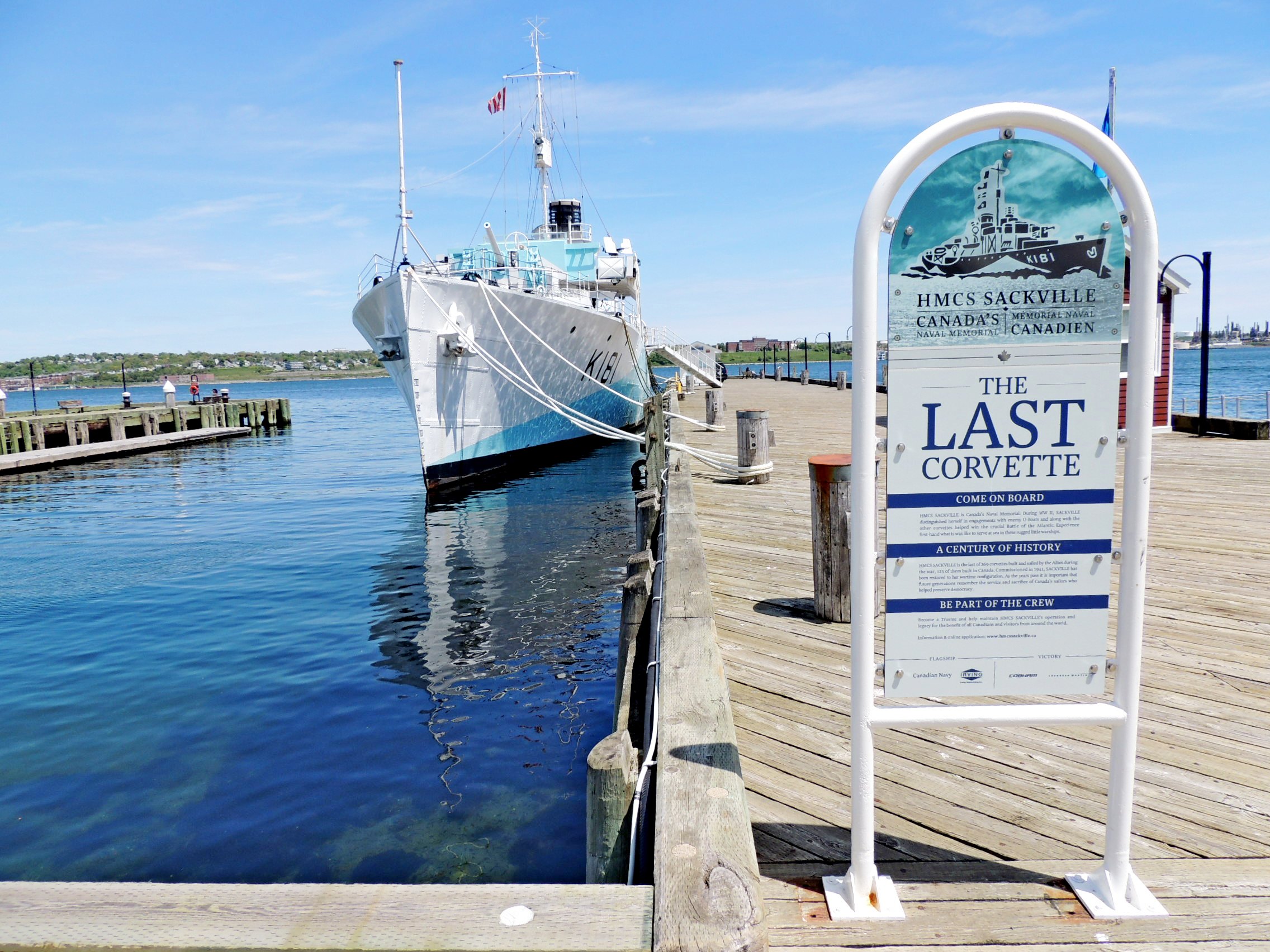|
 HMCS Sackville (K181) Halifax, Nova Scotia Posted by:  T0SHEA T0SHEA
N 44° 38.828 W 063° 34.198
20T E 454802 N 4943910
Canada's naval memorial and a Canadian National Historic site, The Sackville was built in St. John, NB during WW II to escort convoys across the Atlantic. The Sackville was retired for the second and final time in 1982.
Waymark Code: WMQFFB
Location: Nova Scotia, Canada
Date Posted: 02/21/2016
Views: 14
Of 123 Corvettes built for the Royal Canadian Navy during World War II, The Sackville is the only one which remains, the other 122 having slowly been scrapped after the war. Built in 1941 in St. John New Brunswick, she was commissioned in December of 1941, serving the rest of the war as an escort ship for the multitude of convoys which sailed for Britain from Canadian and U.S. ports throughout the war. Specifically, The Sackville escorted ships sailing between Newfoundland and Northern Ireland.
The ship's captain, Lieutenant Alan Easton, earned the Distinguished Service Cross for an encounter with three German U-Boats on August 3-4, 1942, during which the Sackville "seriously damaged one submarine, hit another with gunfire, and depth charged a third".
Not only is The Sackville the only Corvette remaining, but she is Canada's oldest fighting warship and has been Canada's official Naval Memorial since 1985. The ship is also one of the components of the Maritime Museum of the Atlantic and a stand alone museum, as well.
HMCS Sackville is the last of the Flower Class corvettes. Patterned after a whale-catcher, the corvettes were designed for mass production in small shipyards. Originally intended for coastal work, they played a major role in the Battle of the Atlantic. The Sackville, built at Saint John, N. B. and commissioned in December 1941, served most of the war as a mid-ocean convoy escort in the North Atlantic. After the war she was used for oceanographic research for many years. Retired in 1982, she was restored to her 1944 configuration and now serves as Canada's naval memorial.
From the CNHS Plaque
HMCS Sackville was designated a national historic site of Canada in 1988 because: it is a representative example of a Flower Class Corvette; of the part that she played in the Battle of the Atlantic.
HMCS Sackville is one of the last Flower Class Corvettes known to exist. Designed for mass production in small shipyards, they were based on a British Admiralty design patterned after a whale-catcher. This class of ship played a major role in the Battle of the Atlantic. In December 1941, HMCS Sackville entered service escorting convoys between Newfoundland and Northern Ireland. On the night of August 3-4, 1942, while escorting an eastbound convoy in thick fog, HMCS Sackville engaged three German U-boats. Lieutenant Alan Easton and his crew seriously damaged one submarine, hit another with gunfire, and depth charged a third. This action won the Distinguished Service Cross (DSC) for Lieutenant Easton and commendations for the crew. After seeing action again in September 1943, HMCS Sackville was redeployed as an officer training ship in 1944, and laid up in reserve in 1945. Recommissioned in 1952 HMCS Sackville then spent the following 30 years supporting oceanographic, hydrographic, and fisheries research. The ship retired from the Royal Canadian Navy in 1982 and was transferred to the Canadian Naval Corvette Trust in 1983. Now restored to her 1944 configuration, HMCS Sackville is open to the public.
From Parks Canada

The "Official Tourism" URL link to the attraction: [Web Link]

The attraction’s own URL: [Web Link]

Hours of Operation:
Jun–Oct at Sackville Landing, 10am–5pm
Nov–May at HMC Dockyard, by appointment.

Admission Prices:
Adults - $5
Seniors & Children - $2
Families - $10
Children under 6 - Free

Approximate amount of time needed to fully experience the attraction: Half of a day (2-5 hours)

Transportation options to the attraction: Personal Vehicle or Public Transportation

|
Visit Instructions:As a suggestion for your visit log, please make every effort to supply a brief-to-detailed note about your experience at the Waymark. If possible also include an image that was taken when you visited the Waymark. Images can be of yourself, a personal Waymarking signature item or just one of general interest that would be of value to others. Sharing your experience helps promote Waymarking and provides a dynamic history of your adventures.
|